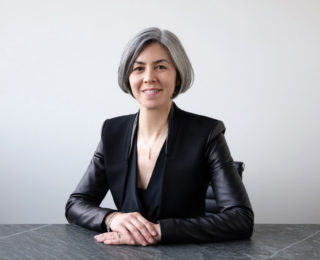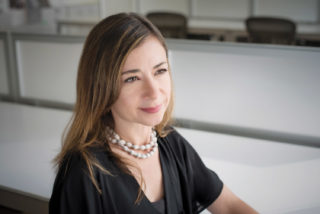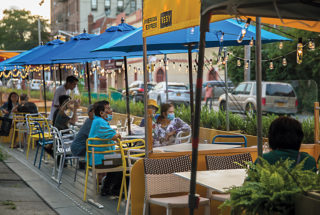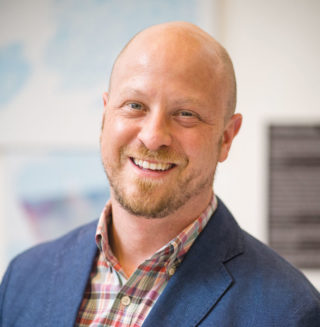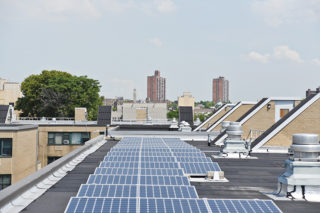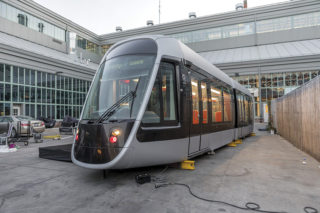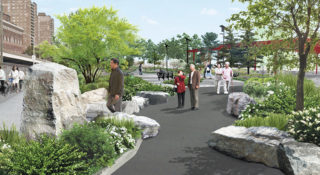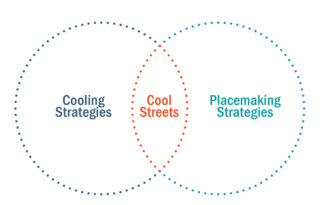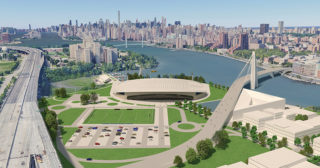When Hurricane Maria hit Puerto Rico in September 2017, the U.S. Army Corps of Engineers had difficulty restoring the island’s devastated power grid. The task involved transporting, installing, and wiring some 62,000 utility poles, many on mountainous terrain. “If moving faster were possible, we would be doing it,” explained Todd T. Semonite, the corps’ chief of engineers and commanding general, told a largely electricityless public in October.
Walter Meyer and Jennifer Bolstad, Brooklyn-based landscape architects and climate change activists, had a better idea—and they had it while the storm was still raging. Unable to reach relatives in Puerto Rico because power lines were down, they decided to use their non-profit Coastal Marine Resource Center to equip community centers and medical facilities with photovoltaic arrays. “Energy is a human right,” Bolstad says, “and one that is too often denied to disadvantaged communities, especially in the wake of natural and man-made disturbances.”
Meyer and Bolstad, who are also partners in the for-profit Local Office Landscape & Urban Design, first experimented with using solar energy as a solution to storm-related power outages in 2012, when Superstorm Sandy savaged New York City’s Rockaway Peninsula. (Bolstad explains that “thanks to a grant from HUD’s Community Development Block Grant program, administered by NYC Economic Development Corporation, the Rockaway work is still ongoing. We are providing free alternative energy systems to a dozen businesses so they can continue to operate with or without grid connections.”)
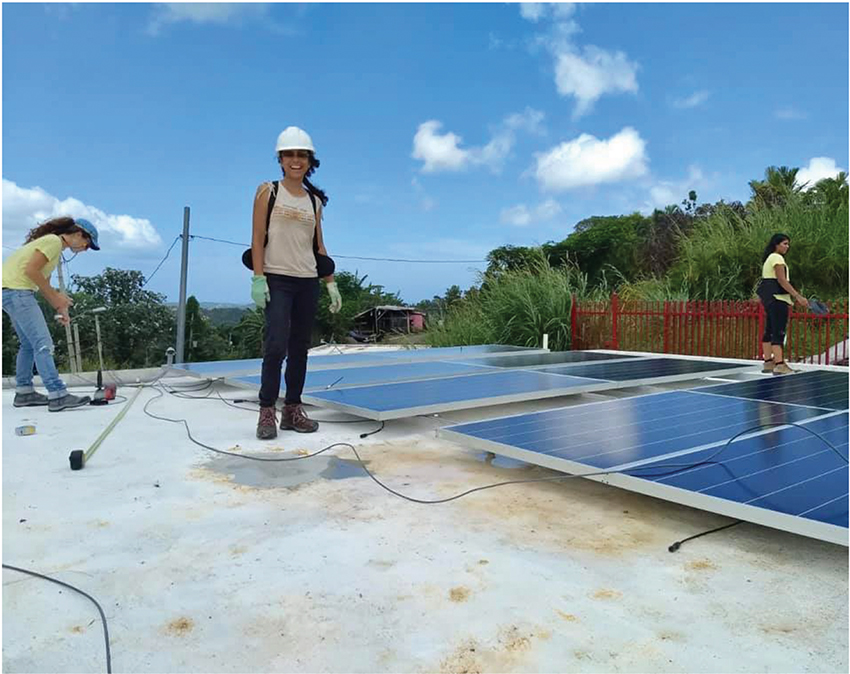
In Puerto Rico, Bolstad and Meyer were determined to install more than 100 grids within a year, using mostly donated materials and volunteer labor. In November 2017, they flew 90 pallets of PV panels to Isabela, Puerto Rico, on a Boeing 767 provided free of charge by FedEx. Meyer’s father, Tom, who has lived in Puerto Rico for more than 20 years, and a network of Meyer’s Isabela surfing buddies unloaded the plane and distributed the panels. The first installation, at a health center in Lares, about an hour from the airport, was completed by the end of that first day. The systems are small—sometimes as few as three panels—but they’re enough to run a few lights and appliances. And they can be quickly removed and stowed in the event of another hurricane, making them part of the island’s resilience planning.
Paola Pagán Berrios, the Puerto Rico-based field manager for the project, known as Solar Libre, says the arrays—180 of which have now been installed—are “decentralizing the production of electricity and giving people in the communities power and independence.”
One Solar Libre beneficiary, a reproductive health center in San Juan, was visited by Hillary Clinton, who, Bolstad says, “has championed our cause and connected us with partners and donors.” Other supporters have included the artists Kara Walker and Ai Weiwei and prominent members of what Meyer calls “the Nuyorican network,” including Rosie Perez and Lin Manuel-Miranda.
“The first year was an emergency—it was about getting the lights turned on,” remembers Meyer. Eventually, with power restored to most of the island, the focus shifted. “About a year after Maria,” Bolstad recalls, “Solar Libre still had lots of momentum and equipment and donations, but far less need for immediate relief operations. So we considered what the program could do to improve environmental justice outcomes for Puerto Rico in the medium and long terms.” Meanwhile, the commercial market for solar power on the island was being served by off-island companies. “It seemed a shame that so much of that work was going to businesses owned outside of PR,” says Bolstad. “And, she adds, “it was painfully obvious that there were very few women in any of these businesses, except in office jobs. Training islanders—especially women—to be able to participate in the growing green economy seemed like a natural evolution for our program, which would build off the resources and connections that were already in place.”
So Solar Libre went from building grids to building expertise. “Providing classroom and hands-on train-ing for solar design, build, and maintenance seemed a natural ladder out of poverty for this overlooked part of the workforce,” Meyer says. “We are trying to catch them before they go to the mainland for work—to reverse the brain drain.”
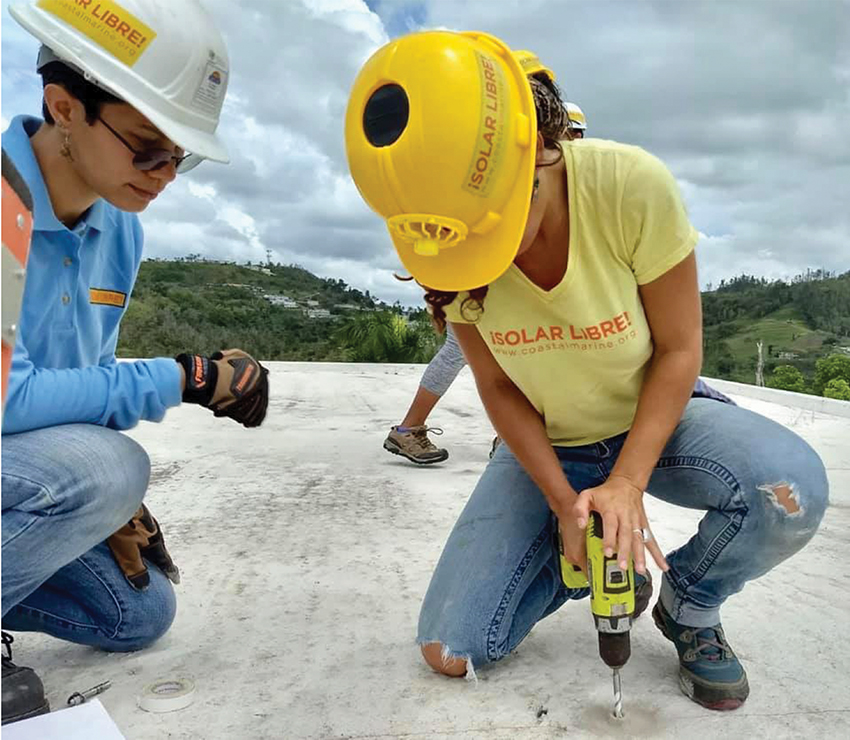
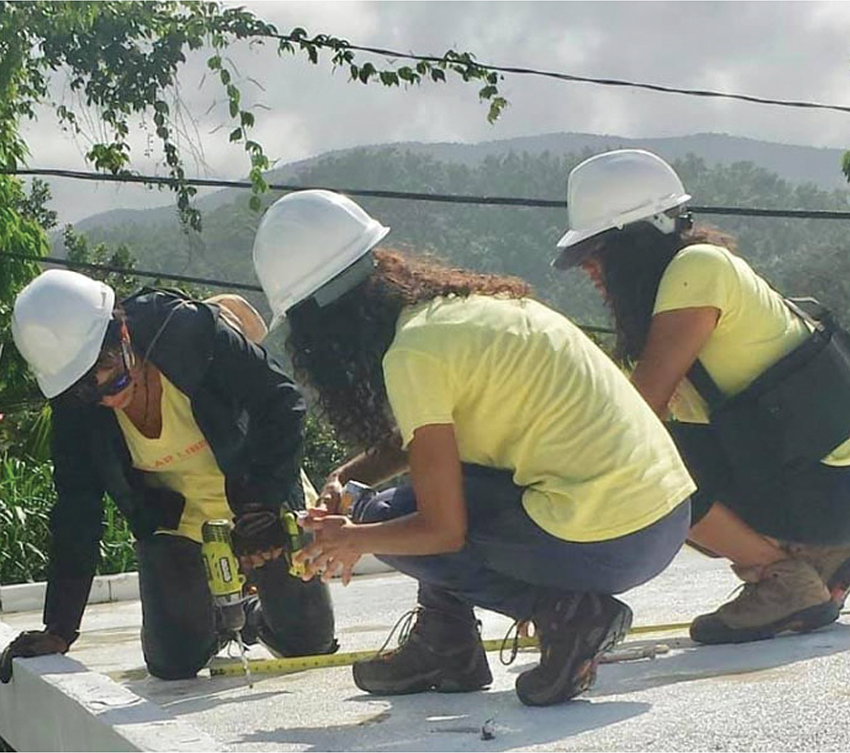
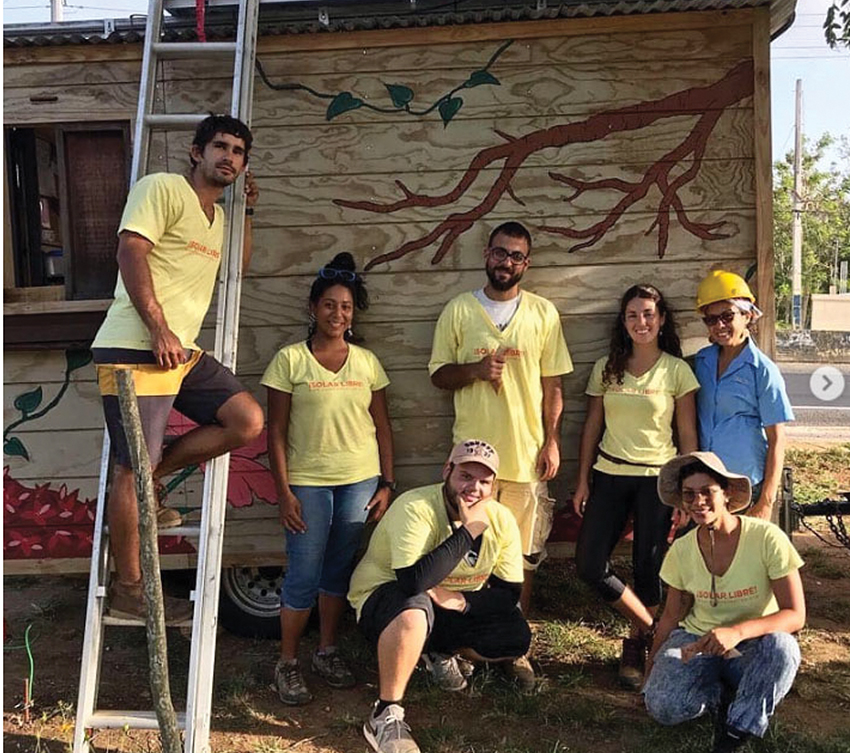
In 2019, the program trained eight apprentices, mostly women, who were then certified by the North American Board of Certified Energy Practitioners (NABCEP) as professional installers. That the women could complete their training in less than a year reflects the fact that Puerto Rico’s permitting process for off-grid solar was streamlined in 2019. “Permits are now three times as fast as in New York,” Meyer reports.
As a result, trainees can complete about 30 projects in a year—about three times as many as on the mainland. So the trainees are coming out of the program with three years of experience, Meyer says—despite the fact that they have Fridays, Saturdays, and Sundays off, an accommodation to trainees who have young children.
Meyer and Bolstad would like to double the size of the program, admitting 16 women to the Solar Libre class of 2021 (which will begin meeting in February). The cost of the program, about $40,000 per trainee, is covered by donors. Some sponsoring companies also send volunteers to help with installations.
Pagán Berrios, a graduate of the apprenticeship program and now a full-time employee of Solar Libre, says she focuses on projects that will “give back to their communities.” Among them is a facility in Orocovis, a small town in the center of the island. Called Healing Emergency Aid Response Team 9/11 (HEART 9/11), it trains residents to work as carpenters and also serves as a community center in emergencies. For that reason, Pagán Berrios says, “It’s important that it have reliable, free, and clean power.” The next time the people of Orocovis have no lights or refrigeration in their homes, HEART 9/11 will offer them a bit of solar libre.
ARCHITECTS DECLARE
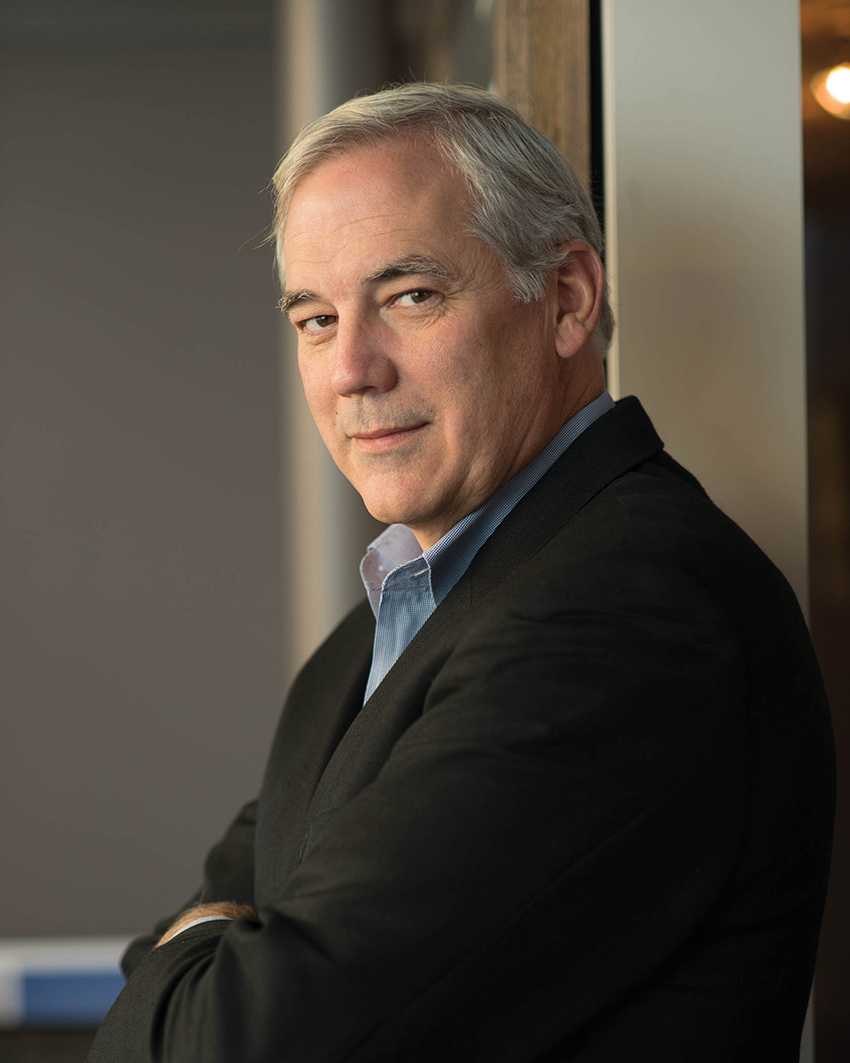
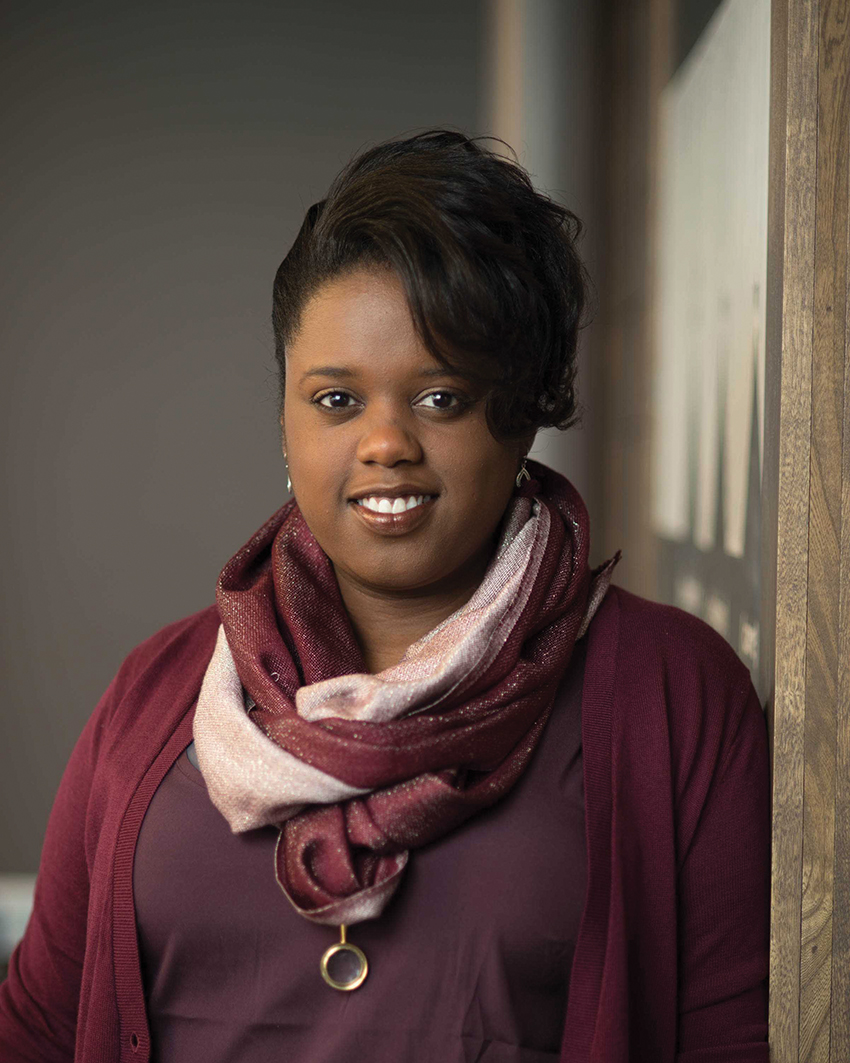
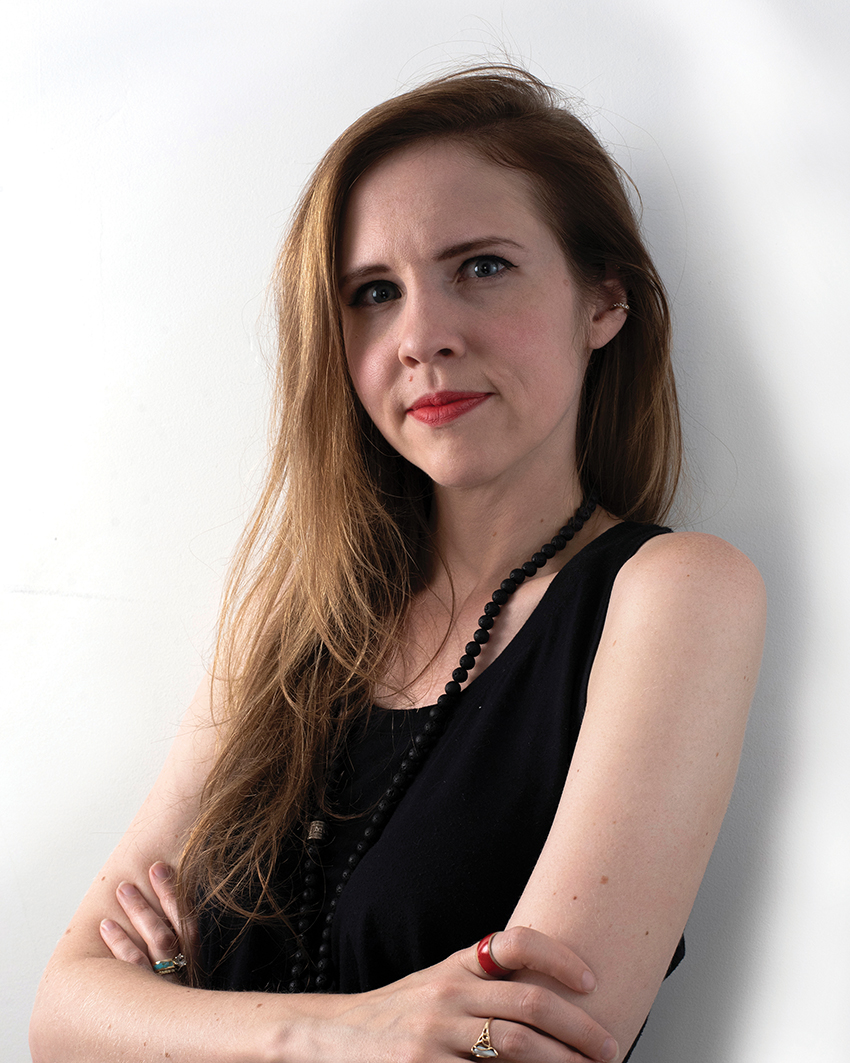
In May 2019, architects Steve Tompkins and Michael Pawlyn brought together the 17 Stirling Prize-winning architecture firms in the United Kingdom to formally declare a climate and biodiversity emergency. Vowing to take action, they formed Architects Declare, a volunteer-led initiative that rapidly gathered signatures from additional firms and individuals in the architecture and construction industries. Since then, their effort has inspired affiliated international branches, spreading to more than 20 countries around the world.
In the United States, Architects Declare, began in January 2020. Before knowing what the following months would bring, the U.S. group made a notable amendment to the original declaration, citing not only crises of climate and biodiversity, but also the emergency of societal inequity. As Roy Decker, FAIA, principal of Duvall Decker and a member of the steering committee of U.S. Architects Declare explains, “We know we are doing damage to our climate, and we know we have a long way to go to promote equity at the highest order in our society. What’s most important is that these problems are not seen as separate issues—they are interrelated. So often in our society and profession, we silo ourselves. We all want to do some kind of public good, but we could have a much bigger impact if we were joined in a collective group that shares knowledge and learning from one another.”
Currently, both individuals and firms are encouraged to become involved in this effort. In September, U.S. Architects Declare hosted a virtual town hall event that served as the public kickoff and invited open participation in establishing the collective’s next steps.
Fellow steering committee member Caitlin Watson, AIA, associate at Kliment Halsband Architects, notes, “Architects Declare is an effort to leverage the work that is being done across the sector, pulling it together in ways that are meaningful and provide avenues to engage in advocacy.”
Certainly, social inequity is not a uniquely American problem. (In fact, the Canadian Architects Declare, which formed before the U.S .affiliate, has also included this within their declaration.) But in the U.S., this is more urgent than ever. “We tend to look at social inequity as separate from the profession, but looking inward at how we’re creating standards and how we’re complicit in systems that do not support diverse voices is the only opportunity to make a real transformation,” explains steering committee member Shannon Gathings, Assoc. AIA, associate at Duvall Decker. “This serves as an important opportunity to be self-reflective, rather than only looking outward.”
Architects Declare is not about simply shining a spotlight on sustainable buildings or highlighting stories of community engagement as exemplars of good practice, but about rethinking the system as a whole—how architects design and build, and how they hear the voices of those who best understand the needs of a community. “We’re trying to find a platform where firms can share best practices,” says Decker. “It will be an open-source library of some kind. Imagine that every firm across the country has access to a resource about climate change, how to increase biodiversity, and how to increase the character of voices in a project.”
While sustainable practices are often at the forefront of discussions in architecture schools, conversations on gender and color have not been much present. As Gathings says, “Even the diversity of thought—who is teaching and who is there to be taught—is incredibly important. If we can have a real collective force going forward, it will be very effective.”
Accordingly, U.S. Architects Declares is itself commit-ted to representing the diversity of voices that make up architecture across the country—including individuals from firms of various sizes, those working in academics, and those who both practice and teach—as well as focusing on racial and regional diversity. (Decker and Gathings are based in Mississippi, Watson is from New York, and other members of the steering committee practice in Arkansas, California, Connecticut, Illinois, Missouri, North Carolina, and Pennsylvania.)
To further investigate the three declared crises, the steering committee has subdivided into working groups, which bring back their insight to the larger group. “It’s about a cross-pollination of these ideas,” says Decker. “We come together to advance a strategy for how that might grow into a whole country working together.” Following the September town hall event, attendees were encouraged to join one or all of these working groups.
Ultimately, one of the primary goals of Architects Declare is to create a community around global warming and equity. This is a guiding principle that has led Architects Declare to be set up as a nonhierarchical initiative. Watson, Decker, and Gathings stress that, while they are members of the steering committee, they are not “in charge”—no one is. The fight against this emergency is a worldwide issue, and progressive action has to remain decentralized.
“There’s no certification, no market, no products,” explains Decker. “This effort can’t be co-opted to benefit any single person. We are a collection of people with shared interests, and we want to support those who want to do good—through resources, information, ideas, and examples. We’re focused on shaping a better practice for human and environmental health.”
VENESA ALICEA-CHUQUI
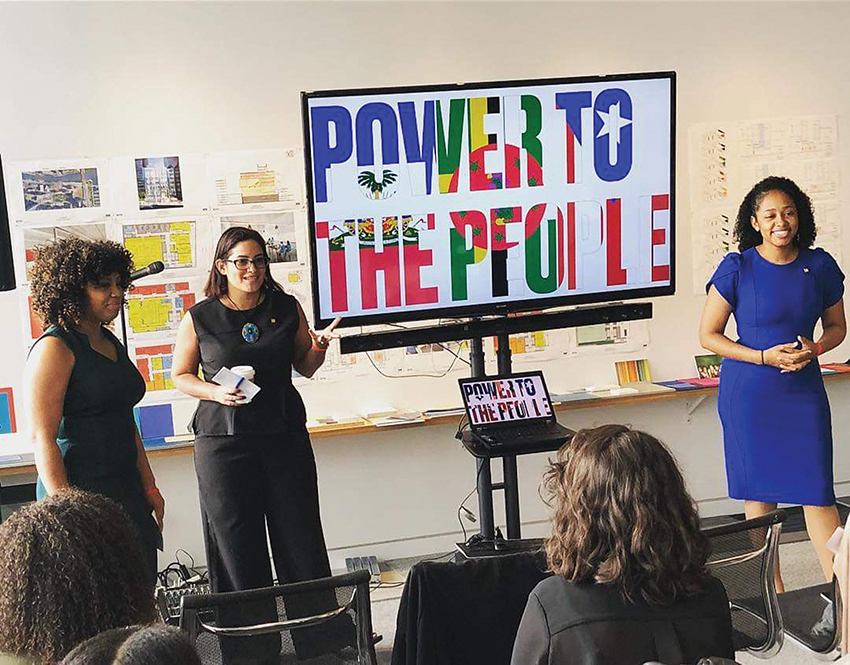
“As architects, we should be stewards of a better, just city. We have to empower people to create the spaces they want,” explains Venesa Alicea-Chuqui, AIA, NOMA, LEED AP BD+C, WELL AP. For the lifelong New Yorker, observing the rapid transformation of the neighborhoods she grew up in sparked a personal and professional interest in how the built environment—residential space, in particular—affects our well-being. An alumna of the City College of New York, Alicea-Chuqui has developed an impressive portfolio of experience in designing affordable housing, and she has consistently championed the importance of considering community needs. Previously an associate at Dattner Architects, working on such celebrated projects as Via Verde, a sustainable affordable development in the South Bronx, she now practices on her own, guided by the same commitment to community-based design.
Over the past few years, Alicea-Chuqui has noticed a shift in New York City’s affordable housing, which has become increasingly developer-driven and less concerned with the people inhabiting the building. “I started to go to community board meetings and became aware of the struggles of those living in these densely populated high-rise buildings,” she explains. “Many issues don’t necessarily stem from the design, but have to do with the life cycle and maintenance of the building; architects aren’t currently involved in those.” This applies to both old and new buildings.
Alicea-Chuqui argues that, especially when new technology is incorporated into buildings, tenant and maintenance education need to be provided. Alicea-Chuqui discusses a tenant guide created for Via Verde that outlined the different materials the architects used in the building and described how to maintain them in a sustainable and healthy way. “You can design some-thing with the best intention, but we don’t fully know how people will use the space,” she says. Providing the right set of resources for building owners is of fundamental importance, especially in affordable housing, where unresolved maintenance issues often don’t receive enough thoughtful consideration. “People are coming from countries where most of their housing is low-rise and spread out,” she explains. “They are being put into tall buildings, with elevators that often don’t work for extended periods of time, which can exacerbate the situation and affect mental and physical health.” Language can add additional barriers and lead to misunderstand-ing of use, but very simple design interventions—such as color-coding rather than lettering on a faucet to denote hot and cold—may greatly improve conditions. Alicea-Chuqui sees this as a social justice issue. “In certain neighborhoods, especially communities of color,” she says, “the health of people is impacted by this lack of resources.” Here Alicea-Chuqui’s interest in sustain-ability relates not only to the ecological impact of architecture but also to how it affects community and well-being.
Alicea-Chuqui advocates for being a “citizen architect,” believing that architects and designers should live in the communities in which they work. She approaches this in her own practice from many sides: she works as a mediator with communities to help them visualize their needs, turning them into programs and partnering with developers to manifest these initiatives. She is also a community-engagement consultant and affordable-housing specialist for larger architecture firms that may not have experience with such projects.
According to Alicea-Chuqui, the separation between the architect and the occupants is too wide. Architects are often brought in once the parameters of a project have already been defined by a client or policy. “I’m interested in the architect’s role in influencing policy to advocate for a better built environment,” she says. Part of the struggle, she explains, is that there are so few people of color who are making the important decisions—who have equity in building and are involved in policy decisions. “The current top-down approach is not working,” she says, “and you can see the impact of it.”
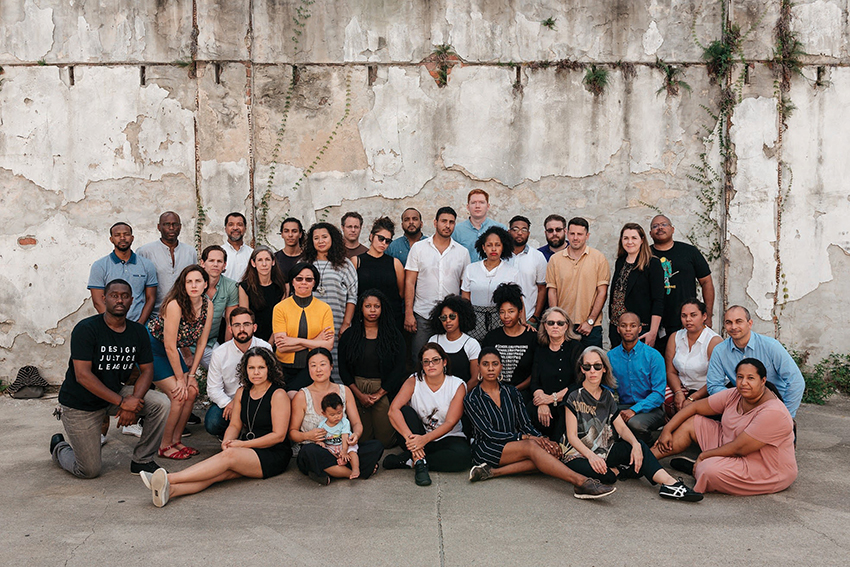
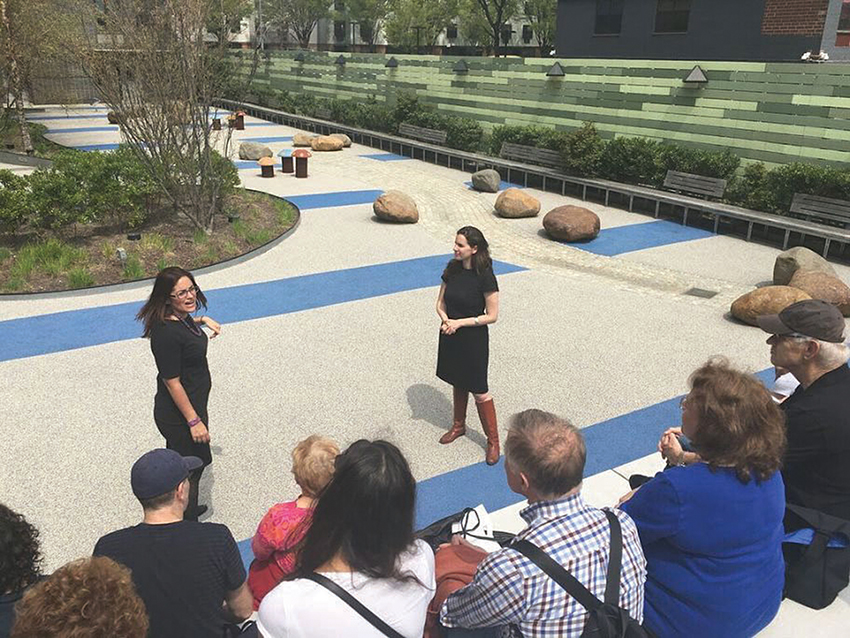
How do we take steps towards increasing diversity in the discipline? Much of the problem is rooted in education and the perception of the profession, she believes. We should not only consider how architecture is taught in schools, but also focus on making architecture a more profitable profession that people would want to pursue. “It’s often not viewed as a viable career for those who have to provide for their family or who have other barriers,” she says. Similarly, architecture should be integrated into K–12 programming so children can become familiar with the discipline as a career path. Alicea-Chuqui quotes Michelle Obama, who succinctly identified the problem in her keynote speech at the AIA National Convention in 2017: “You can’t be what you can’t see.” Especially for children of color, Alicea-Chuqui explains, “if they don’t see BIPOC (Black, Indigenous, People of Color) designers and architects, or if they’ve never met an architect at all, they often don’t see it as an option for them.”
It’s clear that Alicea-Chuqui lives and breathes these concerns, doing all she can to improve the situation. Outside her professional practice, she has taught the co-op internship and architectural management classes at the City College of New York, helping students map their path to licensure, and she has been closely involved with Dark Matter University, created out of the Design as Protest coalition of designers, which challenges architectural pedagogy to create an anti-racist design justice school of thought.
In addition, Alicea-Chuqui is currently enrolled in the master’s program in urban policy and leadership at Hunter College, where classes focus on issues of gentrification, urban data analysis, and civic participation. For Alicea-Chuqui, the program is an opportunity to talk about the underlying problems at the core of social inequity issues. “We have to be able to have those uncomfortable conversations,” she says. “This is urgent; we haven’t yet hit our low.”








